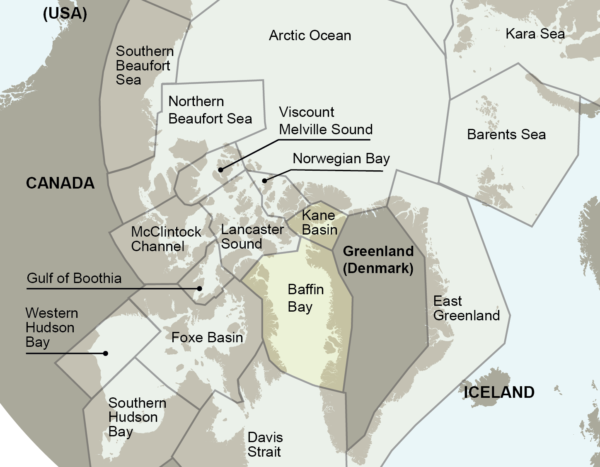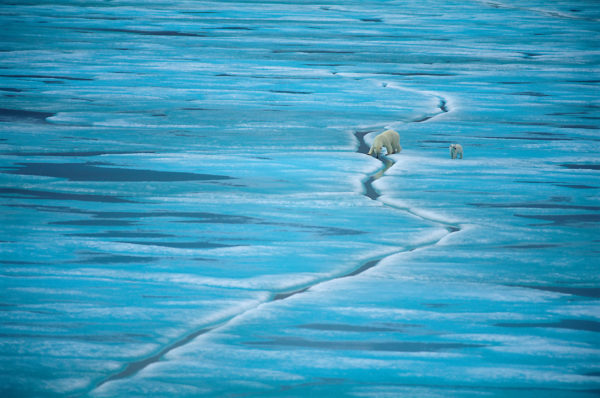Polar bear subpopulations stable, but sea ice loss is taking its toll
IQALUIT — At first glance, newly released polar bear subpopulation survey results seem like great news. Two of Canada’s 13 polar bear subpopulations, previously thought to be declining, are likely stable. One could even be increasing. But that happy headline belies more worrisome findings. Scientists observed that the bears looked thinner, that fewer cubs are surviving into adulthood, and female bears are being forced to swim longer distances for food. The evidence also shows the decline of Arctic sea ice may be a major threat to their long-term survival.

Here’s what the report found:
- The Baffin Bay and Kane Basin subpopulations are now estimated to be 2,826 and 357 bears, respectively. This is up from the last time the bears were surveyed in the 1990s.
- The Baffin Bay subpopulation has experienced dramatic losses in sea ice habitat. For Baffin Bay polar bears, this habitat loss has resulted in the bears having to move farther northward in all seasons. Bears are also spending 20 to 30 days more on land now compared to the 1990s.
- Though the subpopulations are currently stable, the report outlines that the lack of sea ice is resulting in thinner bears, and fewer cubs are surviving into adulthood each year for the Baffin Bay subpopulation.
- The Kane Basin subpopulation is experiencing a temporary benefit as climate change transforms their habitat into a more seasonal sea-ice zone. More cubs are being born and bears have increased access to food. This benefit is likely temporary if sea-ice loss continues.
Sea ice is a vital habitat for polar bears. It is where they feed, give birth, and is the platform they use to move across their range. Sea ice is the central feature for the entire Arctic marine food web.

Why the findings are important
This research – funded in part by WWF-Canada – helps create a baseline from which to measure polar bear health in the future, WWF-Canada Arctic species expert Brandon Laforest explains. “The decreases in reproduction and body condition of polar bears in Baffin Bay are especially worrisome,” Laforest says. “As sea ice continues to decline, frequent and timely monitoring of polar bear subpopulations across Canada will be necessary.”
What can be done
To effectively safeguard the long-term health of polar bears in Canada, we need to:
- Act quickly to protect key habitat, such as the Last Ice Area, where summer sea ice is expected to last the longest.
- Most important, we must attempt to curb the effects of climate change by taking meaningful steps to switching to 100 per cent renewable energies. Only then can our future, and the future health of ice-dependent species, be secured.

